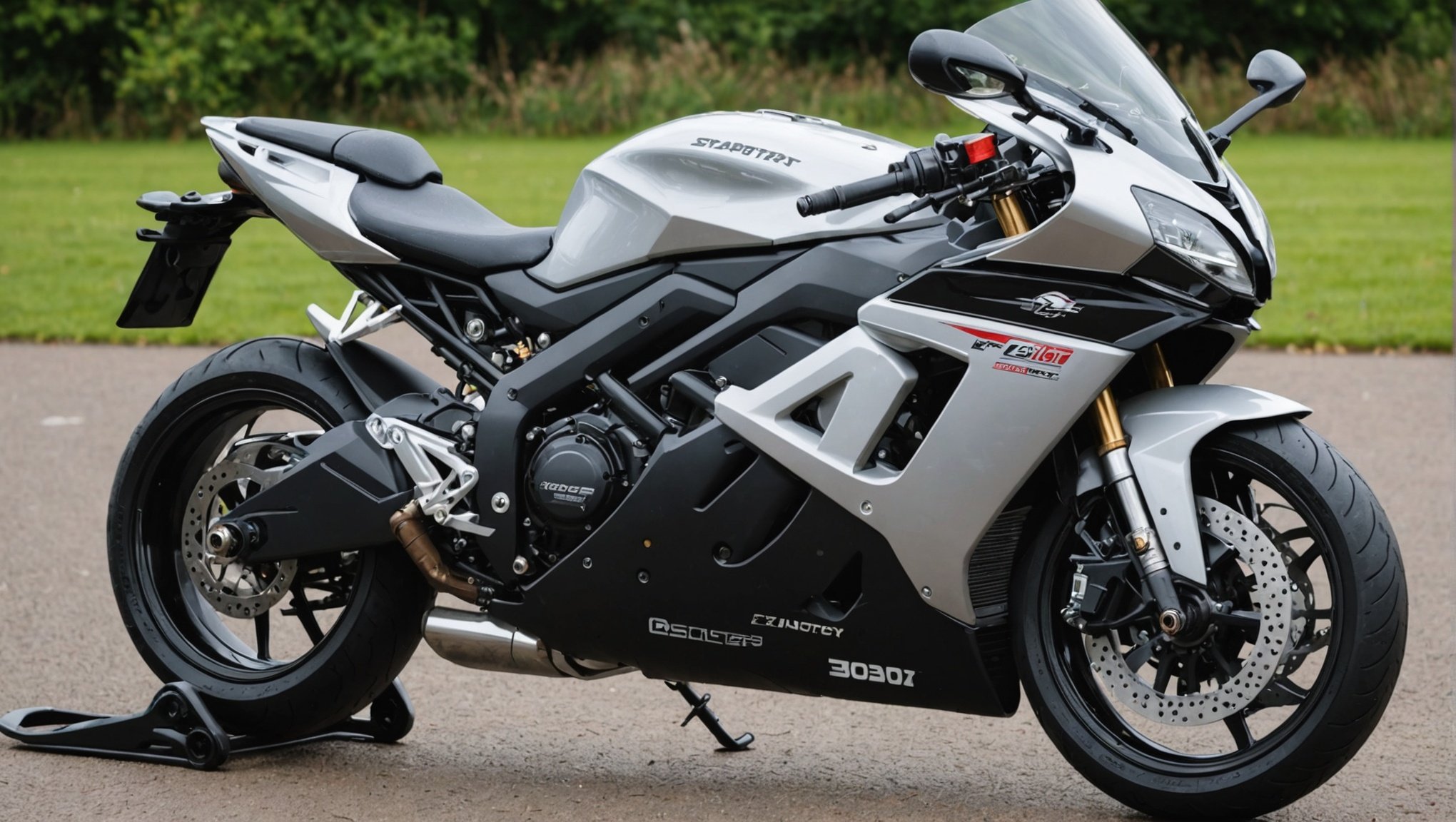Ultimate Guide to Setting Up a Battery Tender for Your Sport Bike This Winter in the UK
As the winter months approach in the UK, many motorcycle enthusiasts are preparing their bikes for the colder season. One of the most critical aspects of winterizing your sport bike is ensuring the battery remains in top condition. A battery tender is an essential tool for this task, and in this guide, we will walk you through the process of setting one up for your motorcycle.
Understanding the Importance of Battery Maintenance
Before we dive into the setup process, it’s crucial to understand why battery maintenance is so important, especially during the winter.
Also read : Top GPS Trackers in the UK for Maximizing Recovery Rates of Stolen Sport Bikes
“Batteries are more prone to discharge in cold weather due to the chemical reactions within the battery slowing down,” explains John Smith, a seasoned motorcycle mechanic. “Using a battery tender helps maintain the optimal voltage levels, ensuring your bike starts effortlessly even on the chilliest mornings.”
Here are some key reasons why you should use a battery tender:
Also to read : Mastering Your Sport Bike”s Rear Suspension: Enhance Traction for UK’s Bumpy Roads
- Extends Battery Life: Regular charging and maintenance prevent deep discharges that can reduce the battery’s lifespan.
- Ensures Reliable Starts: A well-maintained battery guarantees your motorcycle will start reliably, even in cold conditions.
- Saves Time and Money: Avoid the hassle and cost of replacing a dead battery by keeping it charged and healthy.
Choosing the Right Battery Tender
Not all battery tenders are created equal, and selecting the right one for your motorcycle is vital.
Key Features to Look For
When choosing a battery tender, consider the following features:
- Compatibility: Ensure the tender is compatible with your battery type (lead acid, AGM, gel cell, or lithium ion).
- Charging Modes: Look for a tender with multiple charging modes (e.g., initialization, bulk charge, absorption, and float mode) to optimize battery health.
- Safety Features: Opt for a tender with spark-proof circuitry and automatic reversed hook-up detection to prevent accidents.
- Ease of Use: A simple and user-friendly interface is essential for hassle-free operation.
Here is a comparison of some popular battery tenders:
| Battery Tender Model | Compatibility | Charging Modes | Safety Features | Ease of Use |
|---|---|---|---|---|
| Battery Tender Junior | Lead Acid, AGM, Gel | Initialization, Bulk, Absorption, Float | Spark-proof, Reversed Hook-up Detection | Simple, LED Status Lights |
| Mroinge MBC022 | Lead Acid, Lithium | Initialization, Bulk, Absorption, Float | Spark-proof, Reversed Hook-up Detection | Simple, LED Status Lights |
| CTEK MXS 5.0 | Lead Acid, AGM, Gel | Initialization, Bulk, Absorption, Float | Spark-proof, Reversed Hook-up Detection | Advanced, Multiple Settings |
Setting Up Your Battery Tender
Setting up a battery tender is relatively straightforward, but it requires some attention to detail to ensure it works correctly.
Step-by-Step Setup Guide
Here’s a step-by-step guide to setting up your battery tender:
- Connect the Charger to the Battery
- Locate the battery on your motorcycle. For most sport bikes, it’s usually under the seat or in the fairings.
- Connect the positive (red) clamp to the positive terminal and the negative (black) clamp to the negative terminal.
- Ensure the connections are secure and not touching any metal parts.
- Select the Correct Charging Mode
- Choose the appropriate charging mode based on your battery type. For example, if you have a lead acid battery, select the lead acid mode.
- Some tenders have automatic detection, but it’s always good to double-check.
- Plug in the Charger
- Plug the charger into a wall outlet. Make sure the outlet is not overloaded and is in a dry, well-ventilated area.
- If your charger comes with a fused-ring terminal harness or alligator clip accessory cables, use them for hard-to-reach batteries.
- Monitor the Charging Process
- Most battery tenders come with LED status lights that indicate the charging status.
- The charger will go through various stages (initialization, bulk charge, absorption, and float mode) before maintaining the battery at the optimal voltage.
- Store Your Motorcycle Properly
- If you won’t be riding your motorcycle for an extended period, store it in a dry, cool place.
- Disconnect the battery if possible, or use the tender in maintenance mode to keep the battery charged.
Tips for Winter Riding and Battery Care
While a battery tender is essential, there are additional tips to keep your motorcycle battery healthy during the winter.
Winter Riding Tips
- Keep Your Motorcycle in a Dry Place: Avoid storing your bike in damp or wet conditions, as moisture can accelerate battery discharge.
- Use a Battery Warmer: If you live in extremely cold areas, consider using a battery warmer to keep the battery at a stable temperature.
- Check Battery Water Levels: For flooded lead acid batteries, ensure the water levels are at the recommended level to prevent damage.
General Battery Care Tips
- Avoid Deep Discharges: Try to keep your battery charged above 50% if you won’t be riding for a while.
- Clean the Terminals: Regularly clean the battery terminals to prevent corrosion.
- Use the Correct Charger: Always use a charger compatible with your battery type to avoid damage.
Here are some additional tips from motorcycle enthusiasts:
- “I always make sure to check the battery terminals for any signs of corrosion before storing my bike for the winter. It’s a simple step that can save a lot of hassle,” says Jane Doe, a motorcycle owner.
- “Using a battery tender has been a game-changer for me. My bike starts every time, even in the coldest weather,” adds Mike Johnson, another enthusiast.
Common Issues and Troubleshooting
While battery tenders are generally reliable, there can be some common issues that arise.
Common Issues
- Incorrect Connections: Ensure the positive and negative clamps are connected to the correct terminals.
- Charger Not Turning On: Check if the charger is properly plugged in and if there are any blown fuses.
- Battery Not Charging: Verify that the charger is set to the correct battery type and that the connections are secure.
Here is a troubleshooting guide to help you resolve common issues:
| Issue | Solution |
|---|---|
| Incorrect Connections | Double-check the connections to ensure the positive clamp is on the positive terminal and the negative clamp is on the negative terminal. |
| Charger Not Turning On | Check the power cord and ensure it is properly plugged into both the charger and the wall outlet. Also, check for any blown fuses. |
| Battery Not Charging | Ensure the charger is set to the correct battery type. Check the connections to make sure they are secure and not touching any metal parts. |
Setting up a battery tender for your sport bike this winter is a simple yet crucial step to ensure your motorcycle remains in top condition. By choosing the right tender, following the setup guide, and adhering to the tips for winter riding and battery care, you can extend the life of your battery and enjoy reliable starts every time.
Remember, a well-maintained battery is key to a hassle-free riding experience, even in the coldest of winters. So, take the time to set up your battery tender correctly, and you’ll be ready to hit the roads whenever the weather permits.
In conclusion, investing in a battery tender and following these guidelines will make sure your motorcycle is ready for the next ride, no matter the season. Happy riding











